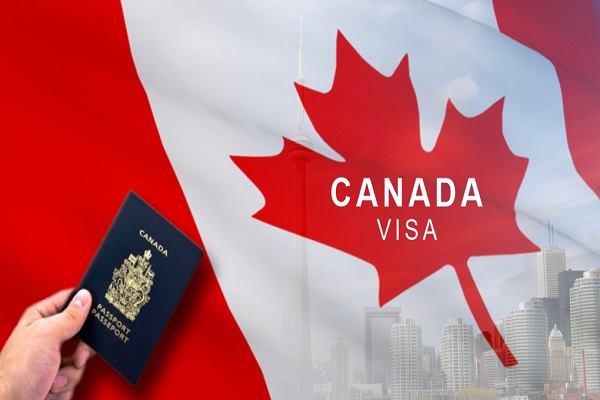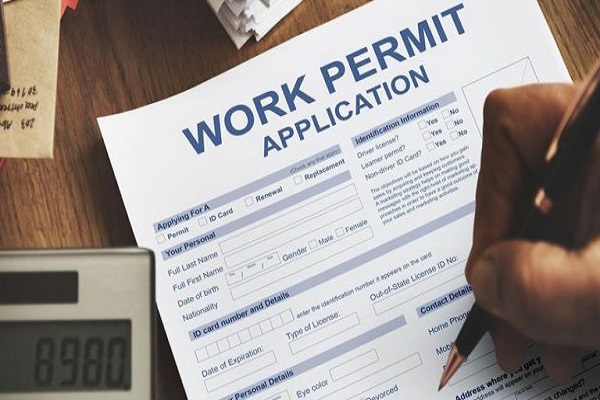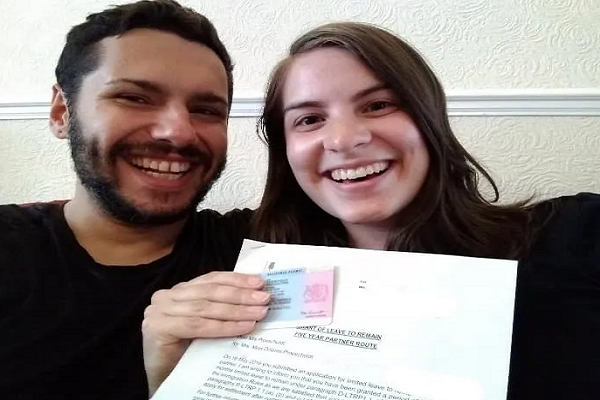Apply For $80,000+ Jobs For Foreigners In USA With Visa Sponsorship – In today’s interconnected world, the United States has emerged as a beacon of opportunity for countless individuals seeking to broaden their horizons and advance their careers on a global stage. The allure of the American Dream, with its promise of personal and professional growth, has consistently attracted talent from all corners of the globe.
Sponsorship jobs in USA represent a gateway to the American experience, offering a pathway for skilled and motivated individuals to contribute to the nation’s dynamic economy and diverse culture.
For prospective employees, the prospect of securing foreign visa sponsorship jobs in USA represents the realization of their American dream. It offers them the chance to build a promising future in the land of opportunity, gain invaluable work experience, and contribute to the socio-economic fabric of the nation. Additionally, visa sponsorship often opens doors to permanent residency and even United States citizenship for those who wish to make America their home.
In this post, we will delve into the key aspects of jobs in USA with visa sponsorship. It will provide insights into the different types of work visas available, the industries that frequently sponsor foreign talent, and the obligations and benefits that both employers and employees must consider.
So let’s proceed…
Types of American Visa Sponsorship
In the United States, there are several types of visas that can be sponsored by individuals, employers, or organizations for foreign nationals to enter and stay in the country legally. These visas serve various purposes, including employment, family reunification, education, and more. Here are some common types of American visa sponsorship:
1. Family-sponsored Visas:
- Immediate Relative Family Sponsorship (IR): For U.S. citizens to sponsor their immediate relatives, such as spouses, parents, and unmarried children under 21, for permanent residency (green card).
- Family Preference Visas (F): For U.S. citizens and lawful permanent residents (LPRs) to sponsor other family members, including unmarried adult children, married children, and siblings.
2. Employment-based Visas:
- H-1B Visa: Sponsored by U.S. employers for foreign professionals with specialized skills or knowledge.
- L-1 Visa: For intracompany transferees who work for multinational companies and are transferred to a U.S. office.
- O Visa: For individuals with extraordinary ability or achievement in fields like arts, sciences, sports, or business.
- EB-1, EB-2, EB-3 Visa: Employment-based preference categories for workers with different skill levels and qualifications.
3. Student Visas:
- F-1 Visa: For foreign students attending academic programs in the U.S.
- J-1 Visa: For exchange visitors participating in approved exchange programs.
4. Investor and Business Visas:
- E-2 Visa: For investors from certain treaty countries who invest a substantial amount of capital in a U.S. business.
- EB-5 Visa: For immigrant investors who invest a significant amount of capital and create jobs in the U.S.
5. Diversity Visa (DV) Lottery:
A limited number of visas are available through an annual lottery program that aims to diversify the immigrant population in the U.S.
6. Refugee and Asylum Visas:
- Asylum: For individuals who fear persecution in their home countries.
- Refugee: For individuals who are unable or unwilling to return to their home countries due to persecution or a well-founded fear of persecution.
- Specialty Visas:
There are various other specialized visas, including U visas for crime victims, T visas for victims of human trafficking, and more.
8. Visitor Visas:
- B-1 Visa: For business visitors.
- B-2 Visa: For tourists and visitors.
9. Diplomatic and Official Visas:
These visas are issued to foreign diplomats, government officials, and representatives of international organizations.
10. Exchange Visitor Visas:
- J-1 Visa: For participants in approved exchange programs, including students, scholars, and professionals.
Visas To Apply For To Get Jobs In USA for Foreigners with Visa Sponsorship
If you are seeking to work in the United States and need a work visa with sponsorship from an employer, there are several visa options available, each with its own eligibility requirements and limitations.
Here are some of the most common employment-based visas you can consider:
1. H-1B Visa:
The H-1B visa is for skilled workers in specialty occupations. To be eligible, you generally need a job offer from a U.S. employer and a bachelor’s degree or higher in a relevant field. H-1B visas are subject to an annual cap, and the application process can be highly competitive.
2. L-1 Visa:
The L-1 visa is for intracompany transferees. It’s suitable for employees of multinational companies who are being transferred to a U.S. office. There are two types: L-1A for managers and executives, and L-1B for employees with specialized knowledge.
3. O-1 Visa:
The O-1 visa is for individuals with extraordinary abilities or achievements in their field, including arts, sciences, business, education, and athletics. It typically requires substantial evidence of your exceptional skills.
4. TN Visa:
The TN visa is available to citizens of Canada and Mexico under the North American Free Trade Agreement (NAFTA). It’s for professionals working in certain designated professions.
5. E-3 Visa:
The E-3 visa is specifically for Australian nationals seeking to work in specialty occupations in the U.S. It’s similar to the H-1B visa in many respects.
6. H-2B Visa:
The H-2B visa is for temporary non-agricultural workers. It’s typically used for seasonal or peak-load work when U.S. workers are not available.
7. J-1 Visa:
The J-1 visa is for exchange visitors and can be used for employment in certain cases, such as internships or research programs. However, it’s primarily designed for cultural exchange.
8. EB-1, EB-2, and EB-3 Visas:
These are employment-based immigrant visas, also known as green cards. They are for individuals seeking permanent residency in the U.S. based on their skills, qualifications, and job offers.
9. H-4, L-2, E-2, etc. (Dependent Visas):
If you are the spouse or dependent child of someone holding one of the above visas, you may be eligible for a dependent visa that allows you to live and study in the U.S.
Requirements and Eligibility Criteria for Foreign Visa Sponsorship Jobs in USA
Visa sponsorship requirements and eligibility criteria can vary significantly depending on the country and the type of visa you are seeking.
Here, we will provide a general overview of common elements involved in visa sponsorship in many countries, such as the United States. Keep in mind that specific requirements may differ, so it’s essential to consult the official government website of the country you’re interested in for precise and up-to-date information.
1. Employer Sponsorship:
Most work visas require an employer in the destination country to sponsor you.
The employer must typically demonstrate that they cannot find a suitable local candidate for the job and that your skills and qualifications are necessary for the position.
2. Job Offer:
You need a job offer or employment contract from the sponsoring employer.
The job offer should include details such as your role, salary, and terms of employment.
3. Visa Category:
Different countries have various visa categories for different purposes, such as work, study, family reunification, or tourism.
You must determine which visa category aligns with your intentions and eligibility.
4. Education and Experience:
Some work visas may require specific educational qualifications or work experience.
You may need to provide evidence of your qualifications and experience, such as degrees, certificates, or employment history.
5. Background Checks:
You may be subject to background checks, including criminal record checks, to ensure you meet the eligibility criteria.
6. Health and Medical Requirements:
Some visas may require you to undergo a medical examination to ensure you do not have contagious diseases or health conditions that could pose a public health risk.
7. Financial Requirements:
You may need to prove that you have sufficient funds to support yourself and any dependents during your stay in the destination country.
8. Language Proficiency:
For some visas, especially if you are not a native English speaker, you may need to demonstrate your proficiency in the language spoken in the destination country.
9. Documentation:
You will need to provide a range of documents, including passport, visa application forms, photographs, and any specific documents required for your visa category.
10. Application Fees:
Visa applications often require payment of fees, which can vary in amount depending on the type of visa and the country.
11. Interviews and Biometrics:
Depending on the country and visa type, you may be required to attend an interview at the embassy or consulate and provide biometric data like fingerprints and photographs.
12. Compliance with Visa Regulations:
Once you obtain a visa, you must comply with the regulations and conditions associated with that visa, such as not working in unauthorized jobs or overstaying your visa’s validity.
How To Find $80,000+ Jobs in USA with Visa Sponsorship
Finding a job in the United States with full visa sponsorship can be a challenging process, but it’s certainly possible. Here are some steps you can follow to increase your chances of finding such opportunities:
1. Determine Your Visa Eligibility:
Understand the types of visas available for foreign workers in the U.S., such as H-1B, L-1, O-1, or EB-3, and identify which one is most suitable for your skills and qualifications.
Ensure you meet the eligibility criteria for the specific visa category you are targeting.
2. Research U.S. Employers:
Identify companies in the United States that are known for sponsoring visas for international employees. Some larger tech companies and multinational corporations are more likely to provide visa sponsorship.
Research companies in your industry that have a history of hiring international talent.
3. Networking:
Attend industry conferences, job fairs, and networking events both in your home country and in the U.S. to connect with potential employers and professionals in your field.
Use professional networking platforms like LinkedIn to establish connections with U.S. employers and recruiters.
4. Online Job Searches:
Utilize job search websites and job boards that specifically cater to international job seekers, such as Indeed, Glassdoor, LinkedIn, or specialized sites like MyVisaJobs.com.
Use specific search terms like “H-1B visa sponsorship” or “sponsorship available” when searching for job listings.
5. Connect with Recruiters:
Contact recruitment agencies and headhunters specializing in international placements.
Share your qualifications and visa needs with them, and they may help you find suitable job openings.
6. Craft an Impressive Resume and Cover Letter:
Tailor your resume and cover letter to highlight your skills, qualifications, and the value you can bring to a U.S. employer.
Emphasize any relevant international experience or qualifications that make you a strong candidate for visa sponsorship.
7. Apply Strategically:
Apply to job listings that explicitly mention visa sponsorship or are open to international candidates.
Customize your application for each job and follow the specific instructions provided by the employer.
8. Prepare for Interviews:
If you’re shortlisted for interviews, be well-prepared to demonstrate your skills and fit for the role.
Be ready to discuss your visa sponsorship needs and why you’re a valuable candidate for the company.
9. Be Patient and Persistent:
The process of finding a job with visa sponsorship can take time, so be patient and persistent in your job search efforts.
Continue networking and applying for relevant positions while maintaining a positive attitude.
10. Seek Legal Advice:
Consult with an immigration attorney or specialist to ensure you understand the visa application process and requirements.
How To Apply for $80,000+ Jobs for Foreigners in USA with Visa Sponsorship
Applying for jobs in USA for foreigners with visa sponsorship can be a complex process, but it’s definitely possible if you meet the qualifications and follow the right steps. Here’s a step-by-step guide to help you navigate this process:
1. Determine Your Eligibility:
Before you start your job search, ensure you’re eligible for a U.S. work visa. The most common work visas include H-1B, L-1, O-1, and TN visas, among others. Your eligibility will depend on factors such as your education, work experience, and the type of job you’re seeking.
2. Identify Prospective Employers:
Look for U.S. companies that are open to hiring foreign talent and willing to sponsor visas. Larger multinational corporations are more likely to have experience with this process.
3. Create or Update Your Resume:
Tailor your resume to the U.S. job market and highlight your skills and qualifications that are relevant to the job you’re applying for.
4. Job Search:
Start searching for job openings that explicitly mention visa sponsorship. You can use job search websites like LinkedIn, Indeed, Glassdoor, and company websites. Networking can also be valuable; attend job fairs, industry events, and connect with professionals in your field.
5. Apply for Jobs:
Follow the application instructions provided in the job postings. Submit your resume and any other required documents.
6. Prepare for Interviews:
If you’re selected for an interview, be prepared to discuss your qualifications, visa requirements, and your willingness to relocate to the U.S. Some companies may conduct video interviews, while others may request an in-person interview.
7. Understand Visa Sponsorship Costs:
Be aware that visa sponsorship can be expensive for employers. Some companies may not offer sponsorship due to the costs and administrative burdens involved.
8. Negotiate Terms:
Once you receive a job offer, discuss visa sponsorship with the employer. Understand the terms and conditions of sponsorship, including who will be responsible for the costs associated with the visa application process.
9. Gather Required Documents:
If the employer agrees to sponsor you, you’ll need to provide the necessary documents for the visa application. This may include your educational certificates, employment letters, and other supporting materials.
10. Visa Application Process:
Depending on the type of visa, you or your employer will need to file the appropriate visa petition with U.S. Citizenship and Immigration Services (USCIS). This process can take several months, so start early.
11. Wait for Visa Approval:
After submitting the visa petition, you’ll need to wait for USCIS to process your application. Be prepared for potential delays and follow up on the status of your application if necessary.
12. Travel and Relocation:
Once your visa is approved, make arrangements for your travel and relocation to the U.S. Ensure you have all the necessary documents, such as your visa stamp, passport, and any additional paperwork required.
13. Maintain Legal Status:
After arriving in the U.S., ensure you follow all visa regulations and maintain your legal status. This includes abiding by the terms of your visa and potentially applying for extensions if needed.
Top Industries and Companies in USA for Visa Sponsorship
Many industries and companies in the United States sponsor visas for foreign workers. The availability of visa sponsorship varies depending on the company’s size, industry, and specific hiring needs.
Here are some top industries and companies that commonly sponsor visas:
1. Information Technology (IT) and Technology Companies:
- Google: One of the largest tech companies in the world, Google sponsors various types of visas.
- Microsoft: Known for sponsoring H-1B visas for technical roles.
- Amazon: Often sponsors visas for roles in software development and engineering.
2. Finance and Banking:
- JPMorgan Chase: A major financial institution that sponsors visas for finance professionals.
- Goldman Sachs: Known for sponsoring visas for roles in finance and investment banking.
3. Consulting Firms:
- McKinsey & Company: Offers visa sponsorship for consulting roles.
- Boston Consulting Group (BCG): Sponsors visas for consulting and advisory positions.
4. Healthcare and Pharmaceuticals:
- Pfizer: Known for sponsoring visas for pharmaceutical research and development.
- Johnson & Johnson: Offers visa sponsorship in various healthcare and pharmaceutical roles.
5. Engineering and Manufacturing:
Boeing: Sponsors visas for aerospace and engineering positions.
General Electric (GE): Offers visa sponsorship for engineering and manufacturing roles.
6. Consumer Goods and Retail:
- Procter & Gamble (P&G): Offers visa sponsorship for marketing, supply chain, and other roles.
- Walmart: Sponsors visas for various positions in retail and supply chain management.
7. Automotive Industry:
- Ford Motor Company: Sponsors visas for engineering and automotive-related roles.
- General Motors (GM): Offers visa sponsorship for engineering and manufacturing positions.
8. Pharmaceutical and Biotechnology:
- Merck: Known for sponsoring visas for pharmaceutical research and development.
- Amgen: Offers visa sponsorship for biotechnology and pharmaceutical roles.
9. Energy and Oil & Gas:
- ExxonMobil: Sponsors visas for positions in the energy sector.
- Chevron: Offers visa sponsorship in the oil and gas industry.
10. Aerospace and Defense:
- Lockheed Martin: Sponsors visas for aerospace and defense engineering roles.
- Northrop Grumman: Offers visa sponsorship in the defense sector.
11. Telecommunications:
- AT&T: Known for sponsoring visas for telecommunications and IT roles.
- Verizon: Offers visa sponsorship in the telecommunications industry.
12. E-commerce and Online Retail:
- eBay: Sponsors visas for various tech and e-commerce roles.
- Shopify: Offers visa sponsorship for positions in e-commerce and software development.
Benefits of American Visa Sponsorship
US Visa sponsorship refers to a situation where an individual, typically an employer or a family member, sponsors someone from another country to come to the United States temporarily or permanently.
The benefits of US Visa sponsorship can vary depending on the type of visa and the specific circumstances, but some common benefits include:
1. Employment Opportunities:
For foreign workers, sponsorship can provide access to employment opportunities in the United States, allowing them to work legally in the country. This can lead to career advancement and potentially higher income.
2. Family Reunification:
Family-based sponsorship allows US citizens and permanent residents to bring their close family members to the United States. This can help families reunite and live together.
3. Education Opportunities:
Some visas, such as the F-1 student visa, allow foreign nationals to study in the United States. This can provide access to high-quality education and research opportunities.
4. Permanent Residency (Green Card):
Employment-based visa sponsorship, such as the H-1B or EB-2/EB-3 visas, can lead to a path to permanent residency (a green card) and eventually US citizenship for foreign workers.
5. Cultural Exchange:
Certain visa programs, like the J-1 exchange visitor program, promote cultural exchange and international cooperation. Participants can gain valuable cultural and educational experiences.
6. Business Expansion:
For US businesses, sponsoring foreign workers can help fill skill gaps and contribute to business growth and competitiveness in the global market.
7. Humanitarian Aid:
Sponsoring refugees or individuals in need of humanitarian assistance allows them to seek refuge in the United States, providing safety and protection from persecution or violence in their home countries.
8. Diversity Visa (DV) Program:
The Diversity Visa program (also known as the Green Card Lottery) is a unique form of sponsorship that allows individuals from countries with historically low rates of immigration to the US to apply for a chance to receive a green card.
9. International Relationships:
Sponsoring individuals for cultural exchange, research, or educational purposes can strengthen international relationships and promote diplomacy.
10. Talent Acquisition:
US companies can attract and retain highly skilled and talented individuals from around the world, which can contribute to innovation and economic growth.
Challenges of Foreign Visa Sponsorship Jobs in USA
Securing foreign visa sponsorship jobs in USA can be challenging for both foreign job seekers and employers. Here are some of the key challenges associated with this process:
1. Visa Availability:
The availability of certain visa categories, such as the H-1B visa, can be limited due to annual quotas and high demand. This makes it competitive and challenging to obtain sponsorship for these visas.
2. Skill Requirements:
Many visa categories require specific skills and qualifications, and employers must demonstrate that there are no qualified U.S. workers available to fill the position before sponsoring a foreign worker. Meeting these requirements can be difficult.
3. Cost:
Sponsoring a foreign worker involves various costs for the employer, including filing fees, legal fees, and potential wage requirements. These costs can be a barrier for some employers, especially smaller businesses.
4. Legal and Regulatory Complexity:
The U.S. immigration system is complex, with changing rules and regulations. Navigating the legal requirements and ensuring compliance can be challenging for both employers and foreign workers.
5. Lengthy Processing Times:
Visa sponsorship can be a time-consuming process, with visa applications often taking several months to be approved. This can be frustrating for both employers and foreign workers.
6. Uncertainty:
The U.S. immigration system can be uncertain, with policies and regulations subject to change. This uncertainty can make it difficult for employers and foreign workers to plan for the future.
7. Limited Opportunities:
Some industries and job sectors are more open to hiring foreign workers with visa sponsorship than others. Finding opportunities in specific fields can be challenging.
8. Language and Cultural Barriers:
Foreign workers may face language and cultural barriers when applying for jobs in the U.S. This can affect the job search process and workplace integration.
9. Geographic Restrictions:
Job opportunities with visa sponsorship may be concentrated in certain regions of the United States, limiting options for foreign job seekers who prefer or need to live in other areas.
10. Dependence on Employer:
Many visa categories tie the foreign worker’s legal status to a specific employer. This can create a power imbalance and limit the worker’s ability to change jobs or pursue other opportunities.
11. Public Perception:
There can be negative public sentiment and political discourse around immigration and visa sponsorship, which can create additional challenges and biases for foreign job seekers.
Frequently Asked Questions
1. What are the common work visas for U.S. employment?
The most common work visas include H-1B (for specialty occupations), L-1 (for intracompany transfers), and O-1 (for individuals with extraordinary abilities).
2. How can I find foreign visa sponsorship jobs in USA?
You can search for such jobs on job search websites, company career pages, and network with professionals in your field. Some companies explicitly mention visa sponsorship in their job postings.
3. Do all employers offer visa sponsorship for international candidates?
No, not all employers offer visa sponsorship. It varies by company and industry. Many large tech companies and consulting firms are known for sponsoring visas, but smaller companies may not have the resources.
4. Can I apply for a visa sponsorship job if I’m already in the U.S. on a different visa?
It depends on the specific visa you are on and the type of job you are applying for. Some visa types allow for a change of status, while others may require leaving the country and reapplying.
5. Is it easier to get visa sponsorship with a job offer or through the H-1B lottery?
It’s generally easier to secure visa sponsorship with a job offer from an employer. The H-1B lottery has a limited number of slots each year and is highly competitive.
6. What are the eligibility criteria for H-1B sponsorship?
To be eligible for H-1B sponsorship, you typically need a job offer in a specialty occupation, a U.S. employer willing to sponsor you, and the required qualifications or education for the role.
7. How long does the visa sponsorship process take?
The processing time can vary depending on the type of visa and your individual circumstances. It can take several months to complete the entire process, from job offer to visa approval.
8. Can my family members come with me on a visa sponsored by my employer?
In many cases, yes. Spouses and unmarried children under 21 can usually accompany you on dependent visas, such as H-4 or L-2, and they may also be eligible for work authorization.
9. What happens if my employment ends while I’m on a sponsored visa?
If your employment ends, you may have a grace period to find a new job or leave the country, depending on the specific visa type. It’s important to consult with an immigration attorney if you’re in this situation.
10. Can I apply for a green card (permanent residency) while on a sponsored work visa?
Yes, many sponsored workers eventually apply for a green card through employment-based immigration categories. Your employer or you can initiate this process.
11. Is visa sponsorship guaranteed if I have a job offer?
Having a job offer is a crucial step, but visa sponsorship is not guaranteed. It depends on the employer’s willingness and ability to navigate the complex immigration process.
Final Note
In conclusion, $80,000+ jobs for foreigners in USA with visa sponsorship play a vital role in addressing workforce needs, fostering diversity, and driving economic growth. They offer opportunities for skilled individuals from around the world to contribute their talents to the American workforce while also benefiting employers seeking specialized skills.
Remember that visa sponsorship is not guaranteed, and competition for sponsored positions can be fierce. However, with dedication, persistence, and the right strategy, you can increase your chances of finding a job in U.S. with full visa sponsorship.
It’s important to note that the specific eligibility criteria, application processes, and requirements for each type of visa can vary significantly. Visa sponsorship typically involves a petitioner (the sponsor) submitting an application or petition on behalf of the beneficiary (the visa applicant) to the United States Citizenship and Immigration Services (USCIS) or the U.S. Department of State, depending on the visa category. Each visa type has its own set of rules and regulations, so it’s essential to consult with immigration authorities or legal experts for guidance when sponsoring or applying for a visa.
REFERENCE(S)
usponsorme.com – The Ultimate Guide To Get Your Job In The USA With Visa Sponsorship
hulkapps.com – Top 10 Easiest Jobs to Get Visa Sponsorship in the U.S.






